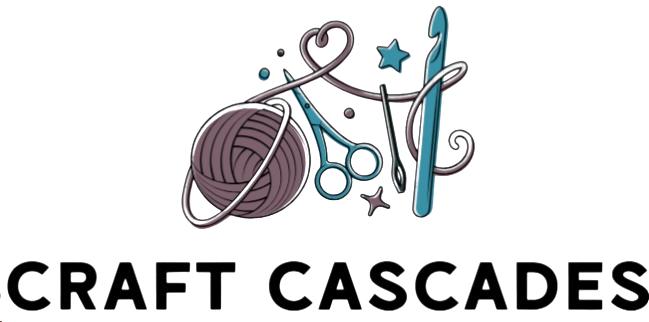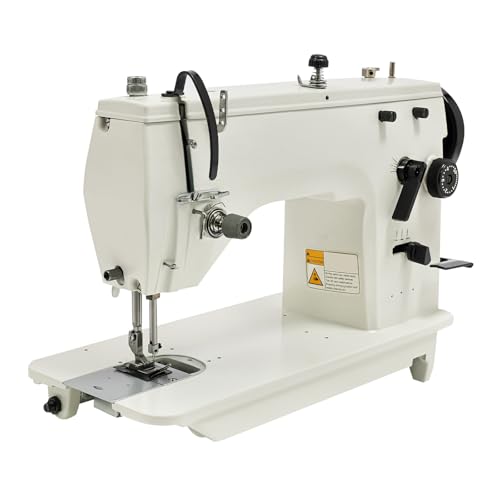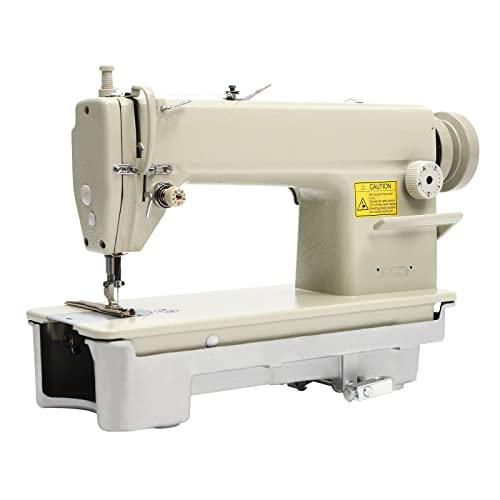Over 80% of home sewers abandon their craft within the first year, often due to choosing the wrong machine for their dressmaking projects. You’ll find that selecting appropriate equipment directly impacts your success and enjoyment in garment construction. Whether you’re creating simple garments or tackling complex couture pieces, understanding which machines excel at specific dressmaking tasks will save you time, frustration, and money. Let’s examine seven standout options that’ll match your skill level and sewing ambitions.
Brother XM2701 Sewing Machine, 27 Stitches, 6 Included Feet
The Brother XM2701 stands out as the best sewing machine for beginners venturing into dressmaking, thanks to its lightweight 12.6-pound frame and user-friendly features that remove common frustrations. You’ll appreciate the automatic needle threader and jam-resistant drop-in bobbin that eliminate tedious setup steps. With 27 built-in stitches including decorative options and an auto-size buttonhole function, you can tackle diverse dressmaking projects confidently. The included six specialty feet—buttonhole, zipper, zigzag, narrow hemmer, blind stitch, and button sewing—provide versatility without additional purchases. Brother backs this machine with a 25-year limited warranty and lifetime technical support, ensuring long-term reliability for your creative endeavors.
Best For: Beginner sewers looking for a lightweight, user-friendly machine with essential features for dressmaking and a wide range of sewing projects without overwhelming complexity.
Pros:
- Automatic needle threader and jam-resistant drop-in bobbin eliminate common beginner frustrations and speed up setup time
- Includes 6 specialty sewing feet and 27 built-in stitches, providing versatility for various dressmaking techniques without additional purchases
- Backed by a 25-year limited warranty and lifetime free technical support from Brother At Your Side Support
Cons:
- Produces noticeable noise when sewing through thicker materials, which may be distracting during extended use
- At 12.6 pounds, while portable, it may still be cumbersome for those needing to frequently move or store the machine
- Limited to 27 stitches, which may not satisfy advanced sewers looking for more decorative or specialized stitch options
Brother Sewing and Quilting Machine (165 Built-in Stitches)
Versatility meets affordability with the Brother XR9550, making it an ideal choice for dressmakers who want extensive stitch options without breaking the bank. You’ll get 165 built-in stitches, including 110 utility and decorative options plus 55 alphanumeric stitches for personalization. The automatic needle threader and large LCD display simplify your workflow, while eight quick-change presser feet handle various dressmaking techniques. At 10.1 pounds, you’ll find it portable enough for classes or workshops. The 25-year warranty and lifetime technical support provide long-term value. While it excels with lightweight fabrics, you’ll want to take into account alternatives for heavy-duty materials.
Best For: Beginner to intermediate dressmakers and quilters seeking an affordable, versatile machine with extensive stitch options for lightweight fabrics and creative personalization projects.
Pros:
- 165 built-in stitches including 55 alphanumeric options provide exceptional creative versatility for personalization and decorative work
- Lightweight at 10.1 pounds with automatic needle threader and LCD display make it portable and user-friendly for beginners
- Excellent value with 25-year limited warranty, lifetime technical support, and 8 included presser feet for various techniques
Cons:
- Limited performance with heavy-duty fabrics, making it unsuitable for upholstery or thick materials
- Auto-threading feature has reported durability issues with some users experiencing malfunctions after minimal use
- Narrow threading area can be challenging to work with, and some specialized accessories like quarter-inch quilting feet sold separately
JUKI DDL8700H High-Speed Lock-Stitch Sewing Machine (Head Only)
Professional dressmakers working with heavyweight fabrics will find exceptional value in the JUKI DDL8700H High-Speed Lock-Stitch Sewing Machine. This industrial-grade head operates at speeds up to 4,000 rpm, making it ideal for denim, leather, and canvas projects. You’ll appreciate the 13mm foot lift and auto-lubrication system that guarantees smooth operation.
However, you’ll need to purchase a table and motor separately, as this head-only unit doesn’t include them. The machine features a 5mm maximum stitch length and adjustable reverse feed. At 74.8 pounds, it’s built for durability. Customer ratings average 3.9 stars, with users praising its performance on heavy materials.
Best For: Professional dressmakers and industrial sewers who work with heavyweight fabrics like denim, leather, and canvas and need a high-speed, durable machine for medium to heavy workloads.
Pros:
- Exceptional high-speed performance at up to 4,000 rpm for efficient production work
- Auto-lubrication system and 13mm foot lift ensure smooth operation on heavy materials
- Durable industrial-grade construction at 74.8 pounds with adjustable reverse feed and 5mm maximum stitch length
Cons:
- Requires separate purchase of table and motor, which are not included with the head-only unit
- Not a walking foot machine, which may limit functionality for certain heavy-duty applications
- Average customer rating of 3.9 stars suggests some user concerns about overall performance or value
Industrial Straight Stitch Heavy Duty Sewing Machine with Adjustable Foot
Serious dressmakers who need industrial-grade performance will find this heavy-duty straight stitch machine delivers the power and precision required for professional garment construction. Built from high-quality cast iron with a specialized spraying process, it resists wear and deformation for long-term reliability. You’ll appreciate the adjustable gauge settings (1-5), reverse stitch capability, and customizable bottom thread tension for complete control. The machine handles fabrics up to 4mm thick and accommodates DP x 5, 14# needles. At 15.7 x 7.1 x 11.4 inches, it’s compact enough for home studios while maintaining the durability demanded by garment factories.
Best For: Serious dressmakers and garment factory operators who need industrial-grade performance and durability for professional garment construction with fabrics up to 4mm thick.
Pros:
- Constructed from high-quality cast iron with specialized spraying process for exceptional durability and resistance to wear and deformation
- Offers complete control with adjustable gauge settings (1-5), reverse stitch capability, and customizable bottom thread tension
- Compact dimensions (15.7 x 7.1 x 11.4 inches) make it suitable for both home studios and garment factories
Cons:
- Limited to straight stitch only with minimal zig-zag width (0-0.354 inches), restricting versatility for decorative sewing
- Cast iron construction makes it significantly heavier than standard home sewing machines, reducing portability
- Requires manual operation via handwheel for needle movement, which may be slower than motorized alternatives
Industrial Straight Stitch Sewing Machine (Model 6150)
If you’re working with heavy-duty materials like leather, canvas, or rubber for creating bags, shoes, or other durable goods, the Industrial Straight Stitch Sewing Machine (Model 6150) offers the power and precision you’ll need. This commercial-grade machine features adjustable gauge settings from 1-5 and a reverse stitch switch for versatile sewing directions. You’ll appreciate the manual presser foot wrench and thread guide for easy adjustments, while the automatic bobbin winder saves time. The fuel-powered design includes an automatic oil return pump for efficient operation. At 56.22 pounds, it’s built for stability and handles nylon, polyester, and cotton threads effectively.
Best For: Professional craftspeople and small manufacturers who regularly work with heavy-duty materials like leather, canvas, and rubber for producing shoes, bags, boots, and other durable goods.
Pros:
- Handles heavy-duty materials (leather, rubber, canvas) with adjustable gauge settings (1-5) and reverse stitch capability for versatile sewing directions
- Time-saving features including automatic bobbin winder and automatic oil return pump with oil quantity monitoring for efficient operation
- Sturdy construction at 56.22 lbs provides stability during operation and accommodates multiple thread types (nylon, polyester, cotton)
Cons:
- Very low customer rating of 1.0 out of 5 stars indicates significant user dissatisfaction with the product
- Motor and table sold separately, requiring additional purchases to make the machine operational
- Fuel-powered operation may be less convenient and more expensive to run compared to electric alternatives
Brother Sewing and Quilting Machine (XR3774)
The Brother XR3774 stands out as an exceptional choice for beginners and hobbyists who want a reliable machine without overwhelming complexity. You’ll appreciate its 37 built-in stitches, including decorative options and a 1-step buttonhole feature. The automatic needle threader and drop-in bobbin simplify setup considerably.
At just 15 pounds, you can easily move this machine between projects. It includes eight sewing feet, a wide table for larger fabrics, and extensive instructional materials. With 4.6 stars from over 5,000 ratings, users praise its smooth operation and excellent value.
However, the presser foot’s 1.5cm lift restricts working with thicker materials, limiting advanced dressmaking applications.
Best For: Beginners and hobbyists seeking a user-friendly, versatile sewing and quilting machine with ample built-in stitches and instructional support at an excellent value.
Pros:
- 37 built-in stitches with automatic needle threader and drop-in bobbin make setup and operation simple for users of all skill levels
- Lightweight at 15 pounds with comprehensive accessories including 8 sewing feet, wide table, and instructional DVD
- Strong customer satisfaction with 4.6 stars from over 5,000 ratings, praised for smooth operation and reliability
Cons:
- Presser foot lifts only 1.5cm, limiting capability with thicker fabrics and advanced dressmaking projects
- Some users report burning smell during high-speed operation, suggesting potential machine stress issues
- Manual requires careful reading as settings for multiple functions can cause operational problems if not properly understood
SINGER MX60 Portable Sewing Machine with Accessory Kit & Foot Pedal
Budget-conscious sewers who need a grab-and-go solution will appreciate the SINGER MX60’s combination of portability and versatility. Weighing just 10 pounds, it offers 57 stitch applications perfect for garment construction, though you’ll need to purchase a separate carrying case. The heavy-duty metal frame provides stability for sewing multiple fabric layers, while preset stitch settings simplify operation. However, reliability concerns and bobbin snagging issues have frustrated some users. The lightweight foot pedal tends to slide during use, and the absence of an automatic needle threader adds extra steps. Consider this machine for occasional dressmaking projects rather than heavy-duty garment construction.
Best For: Budget-conscious sewers who need a lightweight, portable machine for occasional garment construction, basic mending, and craft projects in small spaces.
Pros:
- Lightweight 10-pound design makes it easy to transport to sewing classes or store in compact living spaces
- Heavy-duty metal frame provides stability for sewing through multiple fabric layers without skipping stitches
- 57 stitch applications with preset length and width settings offer versatility for beginners and various sewing tasks
Cons:
- Reliability issues and bobbin snagging problems have frustrated multiple users
- No carrying case included despite being marketed as portable, and lacks automatic needle threader
- Lightweight foot pedal tends to slide during use and feels cheap according to customer feedback
Factors to Consider When Choosing a Sewing Machine for Dressmaking
When you’re shopping for a dressmaking machine, you’ll want to evaluate several key features that directly impact your sewing experience. The right combination of stitch options, portability, presser foot clearance, threading convenience, and bobbin type can make the difference between frustrating sessions and smooth, professional results. Let’s examine each factor so you can identify which features matter most for your specific dressmaking projects.
Stitch Variety and Options
One of your first priorities when selecting a dressmaking machine should be evaluating its stitch variety and options. You’ll want a machine with at least 27 different stitches to cover decorative, utility, and buttonhole applications. Automatic buttonhole features are vital—they’ll give you professional-looking closures without the hassle.
Decorative stitches expand your creative possibilities, allowing unique fabric manipulation and distinctive design elements in your garments. Don’t overlook stitches designed for stretch fabrics, as they’re important for accommodating elasticity in modern dressmaking.
Look for machines offering versatile options for quilting, hems, and appliqué work. These additional stitches will markedly expand your project capabilities, letting you tackle diverse dressmaking challenges with confidence and precision.
Machine Weight and Portability
Your sewing machine’s weight directly impacts how you’ll use it and where you can take it. Portable models typically weigh 10 to 15 pounds, making them perfect for transporting to classes or workshops. If you’ve got limited workspace, these lightweight options offer compact designs that store easily when you’re not sewing.
However, heavier machines over 20 pounds provide superior stability and durability, especially when you’re working with multiple fabric layers during dressmaking projects. They’ll handle heavier materials more effectively for frequent use.
Look for built-in carrying handles if you need portability—they make moving your machine much easier. Consider your sewing habits: choose lightweight for casual projects and occasional transport, or invest in a heavier, robust machine if you’ll regularly tackle demanding dressmaking work.
Presser Foot Lift Height
Everything about dressmaking becomes easier when you’ve got adequate presser foot lift height. This feature determines how thick of fabrics you can comfortably work with, making it essential for layered projects and heavier materials.
Look for machines offering at least 1.5 cm (0.59 inches) of lift height, though higher options provide greater versatility. Adjustable presser foot heights give you control to customize settings based on your fabric type, whether you’re working with delicate silks or multiple layers of denim.
Insufficient lift creates real problems: uneven stitches, fabric bunching, and compromised garment quality. Don’t overlook this specification when shopping for your machine. If you frequently sew with heavier or layered fabrics, prioritize models with maximum lift capacity to guarantee smooth, professional results.
Automatic Needle Threading Feature
Threading a needle ranks among the most tedious aspects of sewing, particularly when you’re switching between thread colors multiple times during a single project. An automatic needle threader eliminates this frustration by completing the task in seconds, allowing you to focus on your dressmaking rather than squinting at tiny needle eyes.
This feature proves invaluable for minimizing eye strain, especially during extended sewing sessions. You’ll appreciate how it streamlines your workflow when working with different thread types or colors throughout your garment construction.
Modern machines often pair automatic threaders with jam-resistant mechanisms, reducing interruptions from threading errors. For dressmakers who value efficiency and a smooth sewing experience, this feature transforms a once-tedious task into a simple, effortless step in your creative process.
Bobbin System Type
The bobbin system you choose impacts your entire sewing experience, from how quickly you can reload thread to the consistency of your stitches. Drop-in bobbins work best for beginners since they’re easy to insert and resistant to jamming. You’ll simply drop them into the machine’s top-loading compartment without complex threading. Front-loading bobbins require more intricate installation but deliver superior thread tension and a more secure fit during extended sewing sessions.
Consider your machine’s compatibility with different bobbin sizes and types, especially when working with varied fabric weights. The quality of your stitches depends on this compatibility. Also evaluate the bobbin winding mechanism‘s efficiency—smooth, quick winding and simple bobbin changes will save you considerable time and frustration throughout your dressmaking projects.
Speed Control Capabilities
Variable speed control transforms how you approach different dressmaking challenges, giving you precise command over everything from delicate silk seams to heavy-duty hemming. You’ll find adjustable speed settings particularly valuable—they let you learn at a comfortable pace as a beginner, then accelerate as your skills develop.
Modern machines reach speeds up to 4,000 stitches per minute for high-volume projects, yet include fine-control features for detailed work. Look for a speed limiter function that restricts maximum speed, ensuring safer, more controlled sewing when tackling challenging techniques.
Digital models offer especially intuitive speed control through simple interfaces, letting you fine-tune your pace instantly. This precision proves essential when working with delicate fabrics or intricate designs where one wrong stitch can compromise your entire garment.
Built-In Vs Computerized Functions
Beyond speed capabilities, choosing between built-in and computerized functions will markedly impact your dressmaking experience and project outcomes. Built-in machines offer basic to decorative stitches with manual controls, making them ideal if you’re beginning your sewing journey. You’ll handle stitch adjustments yourself, which provides straightforward operation.
Computerized machines deliver over 100 stitches with LCD displays for effortless selection. They’ll automatically adjust stitch width and length while storing custom patterns in memory. You’ll save considerable time on complex dressmaking projects since these machines automate parameter adjustments and reduce errors. They also provide error notifications and guided tutorials to enhance your workflow.
If you’re an experienced sewist tackling intricate designs, computerized functions offer superior convenience. However, built-in machines remain effective for everyday dressmaking tasks.
Warranty and Technical Support
When evaluating sewing machines for dressmaking, warranty coverage and technical support can make the difference between a frustrating experience and smooth, long-term satisfaction. Look for manufacturers offering extended warranties—25-year limited warranties demonstrate confidence in their product’s durability. Free lifetime technical assistance is invaluable when you’re troubleshooting mid-project issues.
Comprehensive instructional materials, including detailed manuals and DVDs, help beginners master their machines quickly. Before purchasing, check customer reviews specifically mentioning support responsiveness and effectiveness. You’ll want to know if the manufacturer actually stands behind their warranty promises.
Prioritize machines with satisfaction ratings of 4.6 stars or higher that also feature robust warranty and support options. This combination typically indicates a reliable investment for your dressmaking endeavors, ensuring you’ll have assistance whenever challenges arise.






